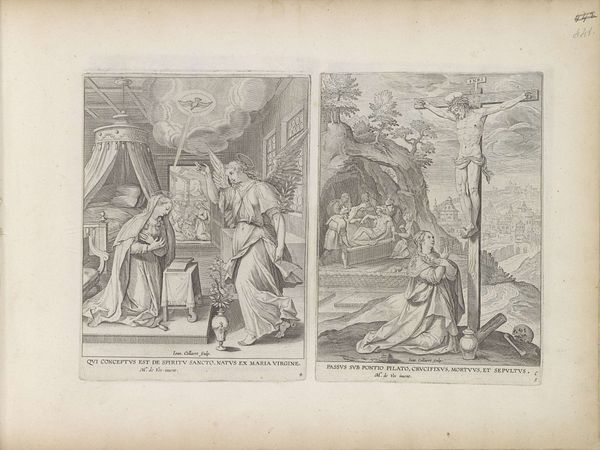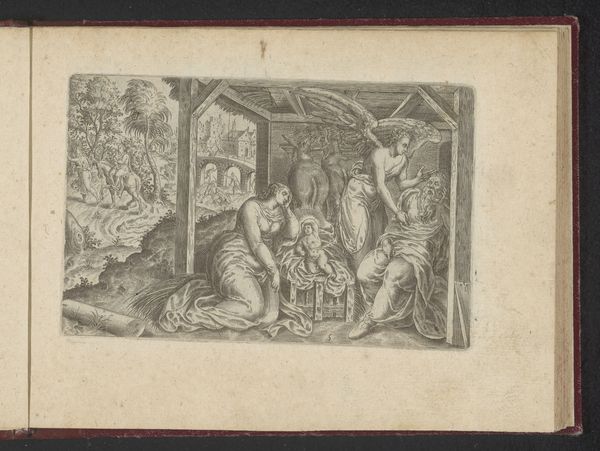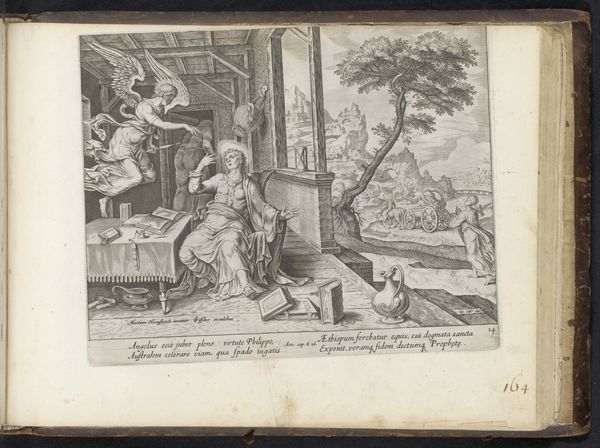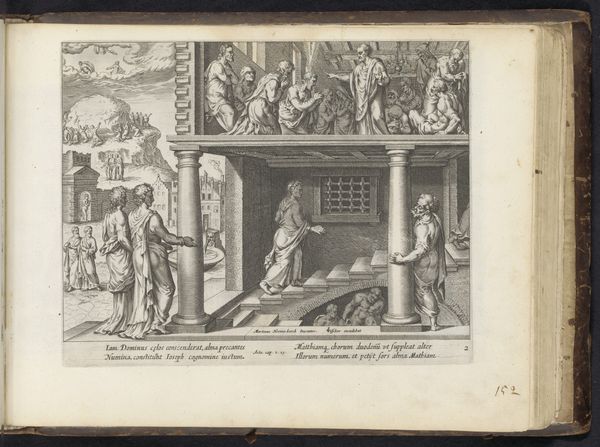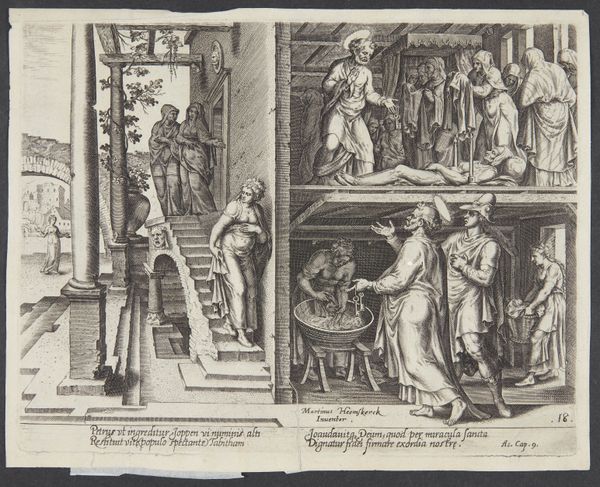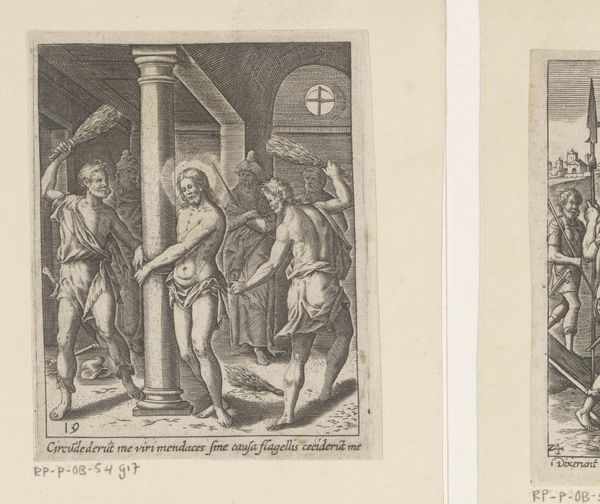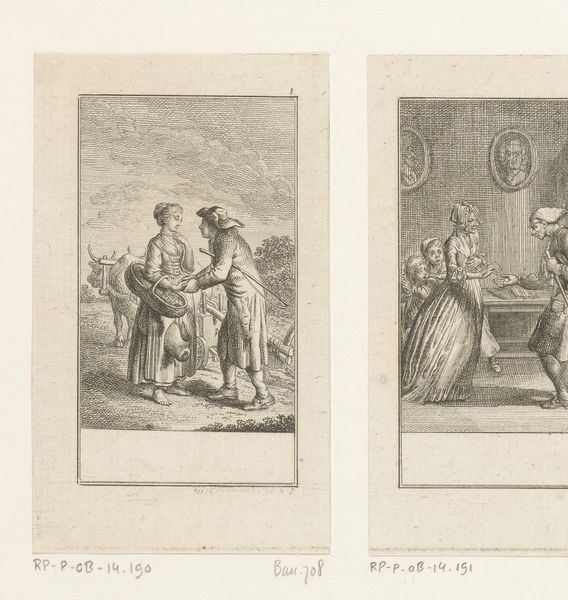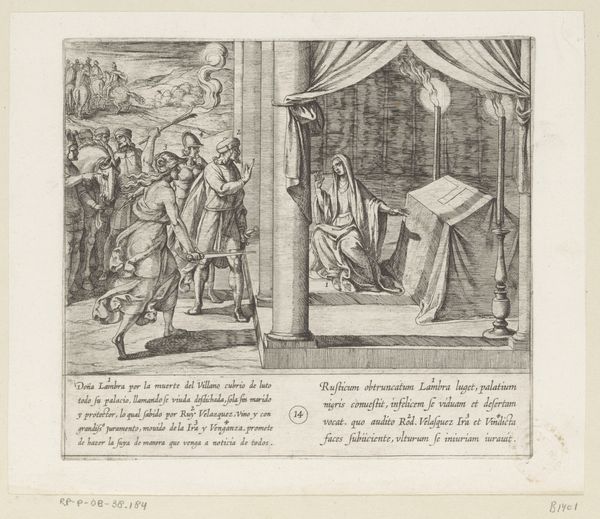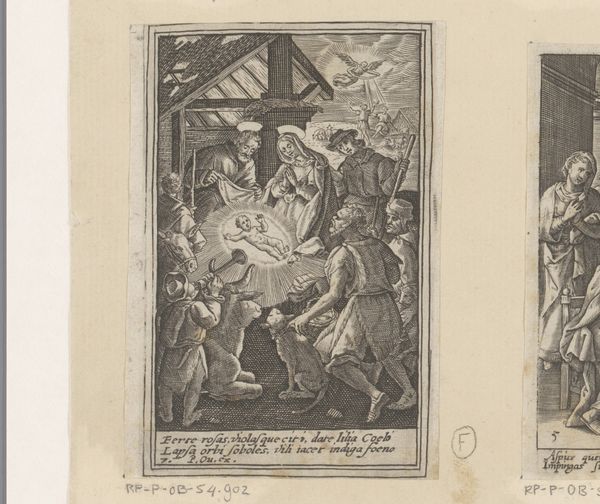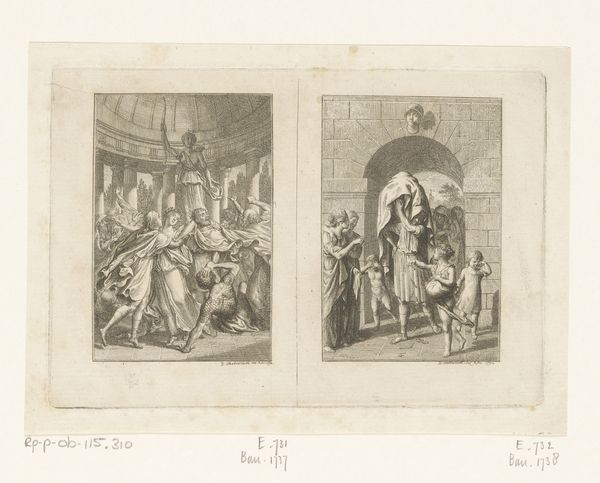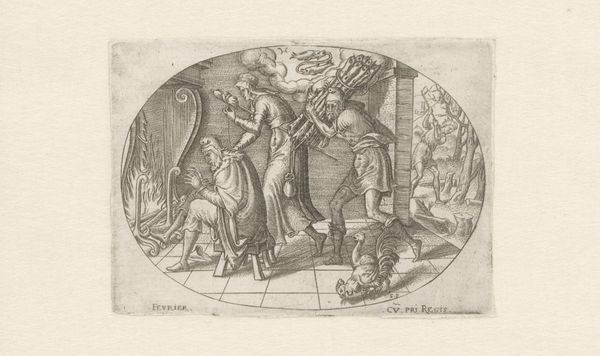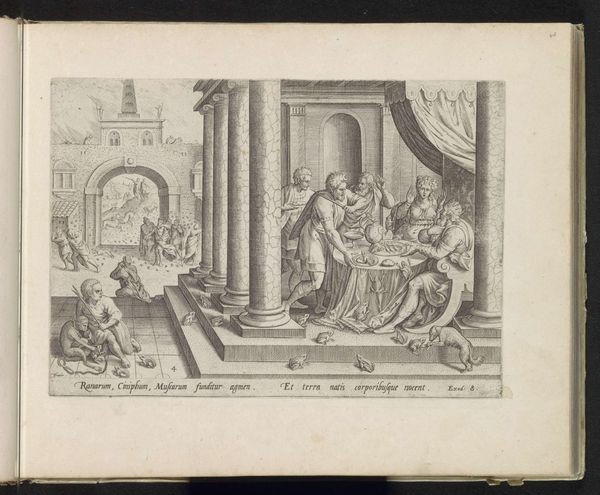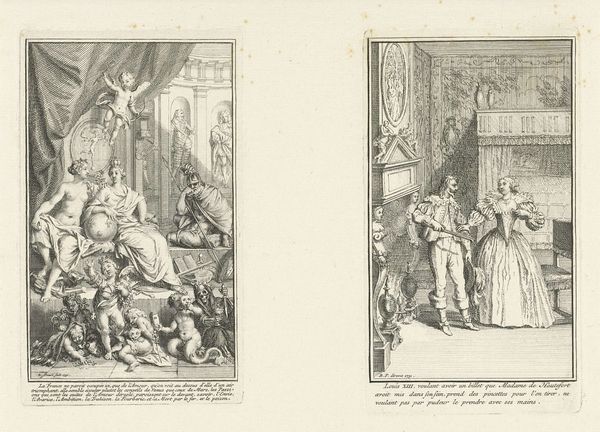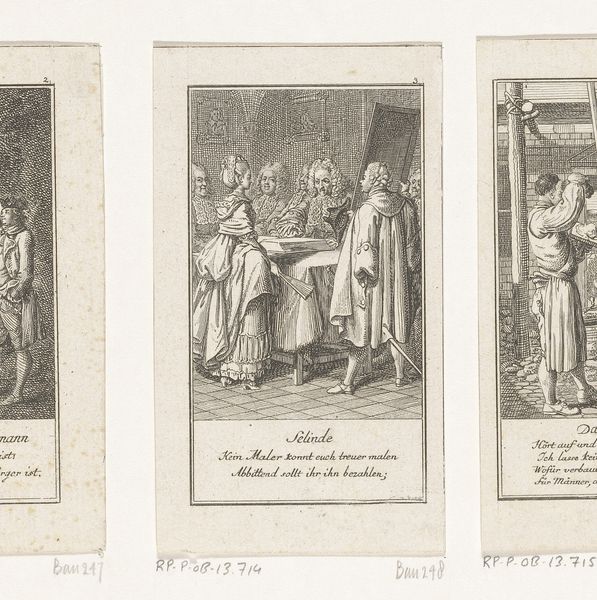
print, engraving
#
allegory
#
baroque
# print
#
history-painting
#
engraving
Dimensions: height 88 mm, width 73 mm
Copyright: Rijks Museum: Open Domain
This engraving of the Annunciation was made by Heinrich Ulrich in the late 16th century. Ulrich would have used a sharp tool called a burin to carve lines into a copper plate. Ink would then be applied to the plate, and wiped away from the surface, remaining only in the incised lines. The plate would then be pressed onto paper, transferring the image. Consider the labor involved in this process: the meticulous work of engraving, the precise application of ink, and the careful handling of the printing press. These are all highly skilled tasks, requiring years of training and practice. In its time, printmaking allowed for the mass production of images, making art more accessible to a wider audience, but it also depended on the skilled labor of artisans. Looking closely, you can see the incredible detail that Ulrich was able to achieve with this technique, from the delicate folds of Mary's dress to the intricate architectural details of the room. The choice of materials and processes is crucial to understanding the image’s meaning and cultural significance.
Comments
No comments
Be the first to comment and join the conversation on the ultimate creative platform.
